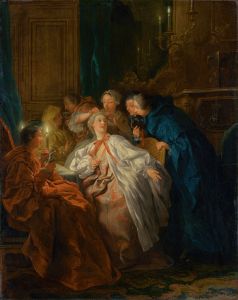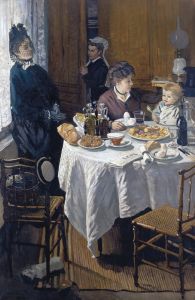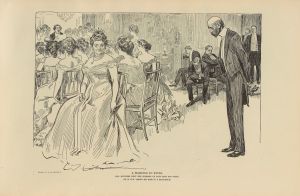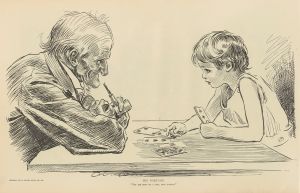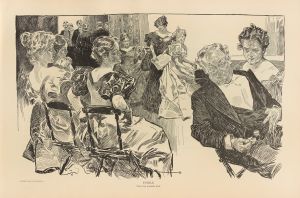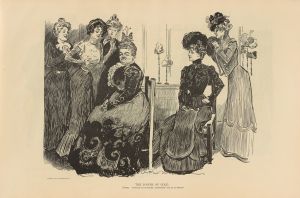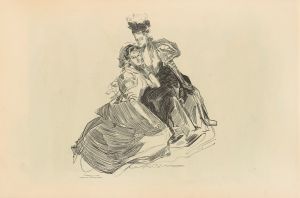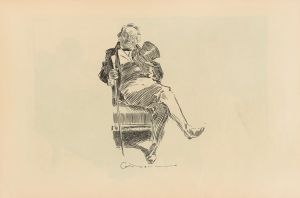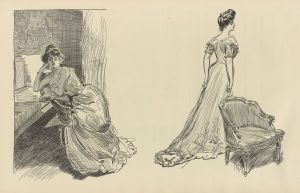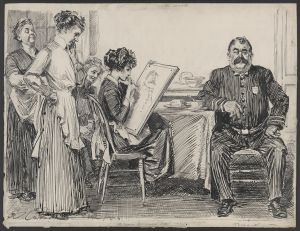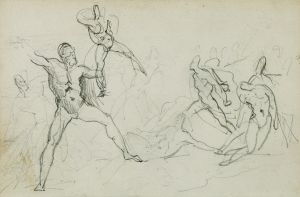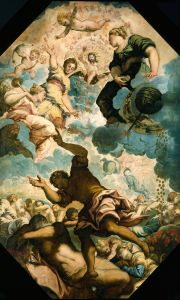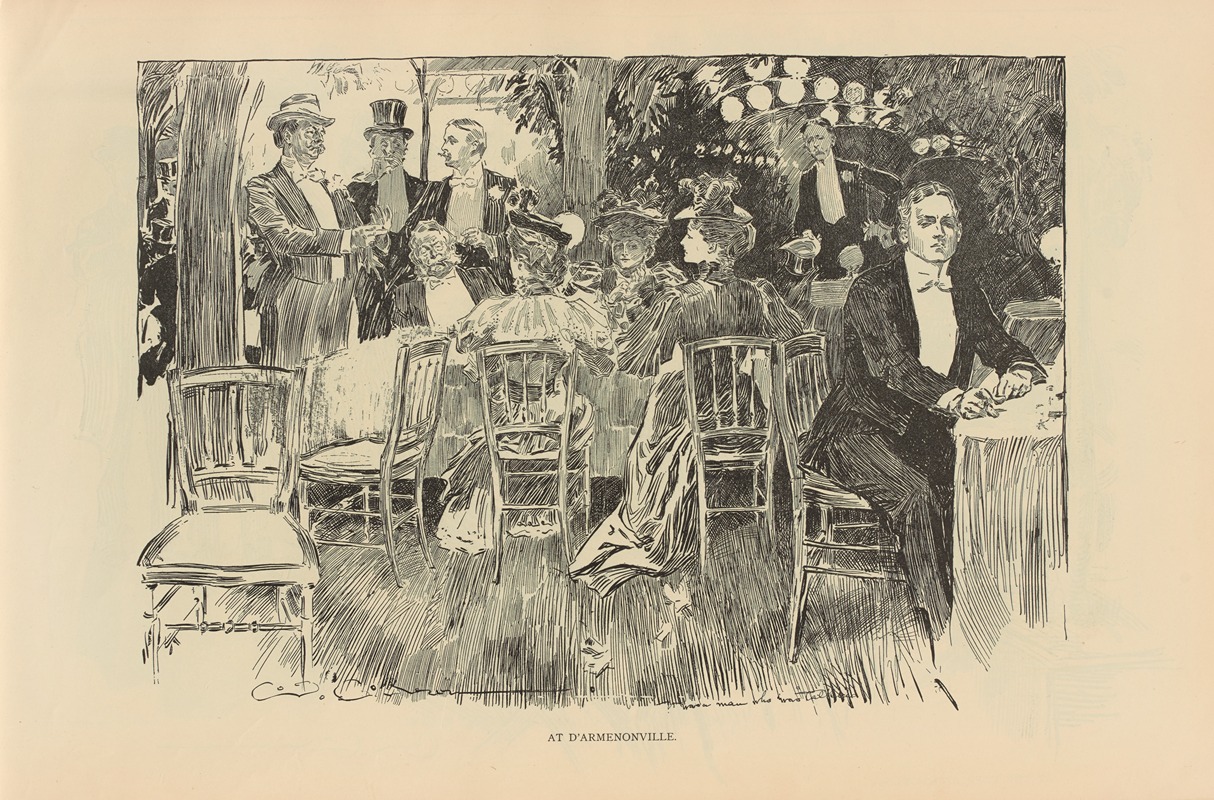
At D’Armenonville
A hand-painted replica of Charles Dana Gibson’s masterpiece At D’Armenonville, meticulously crafted by professional artists to capture the true essence of the original. Each piece is created with museum-quality canvas and rare mineral pigments, carefully painted by experienced artists with delicate brushstrokes and rich, layered colors to perfectly recreate the texture of the original artwork. Unlike machine-printed reproductions, this hand-painted version brings the painting to life, infused with the artist’s emotions and skill in every stroke. Whether for personal collection or home decoration, it instantly elevates the artistic atmosphere of any space.
Charles Dana Gibson was an influential American illustrator, best known for his creation of the "Gibson Girl," an iconic representation of the American woman at the turn of the 20th century. His work captured the spirit and style of the era, and his illustrations were widely published in magazines such as Life, Scribner's, and Harper's. Among his many works, "At D’Armenonville" stands out as a notable piece, though specific details about this particular illustration are limited.
"At D’Armenonville" is one of Gibson's many illustrations that reflect the social settings and cultural nuances of his time. While there is limited specific information available about this particular illustration, it is likely that it shares common themes with his other works, which often depicted scenes of leisure, society, and the interactions between men and women. Gibson's illustrations were known for their detailed line work and the expressive, often humorous, portrayal of characters.
The title "At D’Armenonville" suggests a setting at the Restaurant de l'Armenonville, a famous dining establishment located in the Bois de Boulogne, Paris. This restaurant was a popular gathering place for the elite and fashionable society during the late 19th and early 20th centuries. It was known for its elegant ambiance and was frequented by both locals and international visitors. The choice of such a setting would have resonated with Gibson's audience, who were familiar with the allure and sophistication associated with Parisian culture.
Gibson's work, including "At D’Armenonville," often explored themes of romance, social status, and the changing roles of women during the early 1900s. The "Gibson Girl" was characterized by her beauty, independence, and confidence, embodying the idealized image of the modern woman. This figure became a cultural icon and was featured in many of Gibson's illustrations, often depicted in various social situations that highlighted her poise and charm.
While specific details about the characters and composition of "At D’Armenonville" are not readily available, it is reasonable to assume that the illustration would have included elements typical of Gibson's style. These might include elegantly dressed figures engaged in conversation or leisure activities, set against the backdrop of a sophisticated social environment. The illustration would likely have captured the nuances of fashion and etiquette of the time, reflecting Gibson's keen observation of society.
Gibson's illustrations, including "At D’Armenonville," played a significant role in shaping public perceptions of gender and class during his era. His work continues to be studied and appreciated for its artistic merit and its contribution to the visual culture of the early 20th century. Although specific information about "At D’Armenonville" is scarce, it remains a part of Gibson's broader legacy as a master illustrator who captured the essence of his time with wit and elegance.





